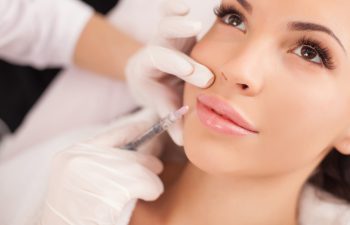5 Tips To Master Pain-Free Lip Injections

Non-invasive cosmetic treatments like Botox and dermal filler injections are the number one way to achieve a more youthful look without undergoing invasive surgery. Cosmetic procedures such as lip injections are in high demand—more than six million treatments are performed each year. If you are a medical professional or nurse practitioner and looking to add administering lip injections to your expertise, here are five tips to help you master your injecting technique.
Who Qualifies For Treatment
Although injection procedures are non-invasive, they still require preparation and consultation to make sure it’s doable. Potential patients should avoid dental cleaning or procedures, vaccinations, and anything else that may increase local or bloodstream bacteria in the days leading up to the lip injection. Women who are pregnant or breastfeeding are usually off-limits, but it is up to you to make the decision. Be sure to have a consultation with your potential patients to make sure a lip injection is a right procedure for them.
Related Post: How To Manage Patient Expectations For First-Time Aesthetic Treatments
Understand The Area You Are Injecting
A licensed professional with aesthetic training must possess a basic knowledge of facial anatomy. To properly administer lip injections, an understanding of the oral and perioral areas is a necessity. Learn the musculature and circulatory system to avoid any errors down the road. AAAMS offers a complete Facial Aesthetic 101 Series, a self-paced course where you can learn facial anatomy and physiognomy and also receive comprehensive Botox and dermal filler training.
Learn Different Injection Techniques
There are different ways to inject the lips including the type of needle you use. Depending on the area and desired look, you will have the option of using a traditional needle or a cannula, a flexible needle with a blunt tip. Learning the different injection techniques, including the Phi, Cupid’s Bow, and Russian Lip techniques, is a must. It is important to give your patient what they want in a way that is both effective and safe for you and them.
Try Different Injection Products
There are multiple products available for aesthetic medicine and it is up to you to decide which one is right for your patient and the area you are treating. Hyaluronic acid-based solutions, like Juvéderm or Restylane products, are the most commonly used for lip injections. Restylane provides a firmer consistency for fuller lips while Juvéderm is softer than most fillers and achieves a more natural look. Although these are the most common, there are various alternatives, so make sure to do your research on which one to use.
Related Post: 5 Top Skills Dermal Filler Training Gives You to Grow Your Medical Aesthetic Practice
Understand Potential Adverse Incidents
For any cosmetic procedure, you must be aware of all potential side effects and complications so you will be able to treat them if they occur. Be aware of the different effects ranging from erythema, reddening which can last up to a couple of hours after the procedure, to angioedema, a skin reaction that causes swelling that can last for a few days. These effects and complications do not happen frequently, but it is always beneficial to be prepared. All patients must be aware of possible side effects after treatment as well. Aesthetic medicine is a good way to expand your skills and gain more experience in the aesthetics field. With proper aesthetic and botox training and preparation, it won’t be long before you have useful knowledge of how to apply aesthetic treatments and master the different techniques. Visit the AAAMS website to enroll in a facial aesthetic course or learn more about the other AAAMS aesthetic training courses and how you can make it a part of your practice.
Posted on behalf of
640 South San Vicente, Suite 410
Los Angeles, CA 90048
Phone: (310) 274-9955
info@aaams.net
Monday - Friday 9:00 AM – 5:00 PM
